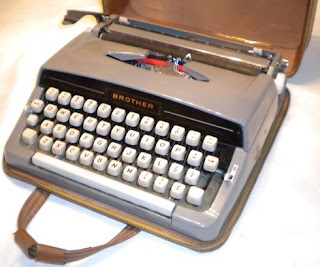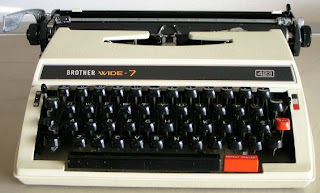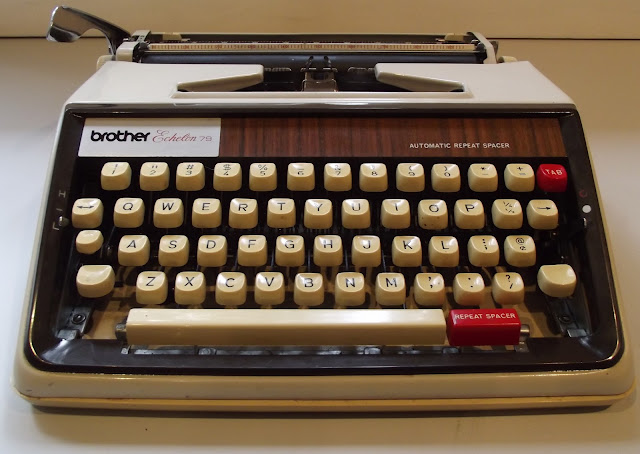Remington 2
First typewriter with case shift
Yost
Did George use it to write the memoirs of the dead?
Royal Bar-Lock
The jewel in Spiro's crown
(It's got a stand-in platen while the real one is being fixed)
Smith Premier 10
Last model with double keyboard and frontstroke action
Royal Standard 1
More on this 'machine worth fighting for' tomorrow
Blick Ninety
Per the infamous Mr Roberts
Fox 24
One of the fastest typing machines ever made
Mignon
Thank you Mr Sell
Royal 10
And hats off to Messrs Hess and Myers
Winsor
For this little gem I am indebted to Professor Polt









































































































































